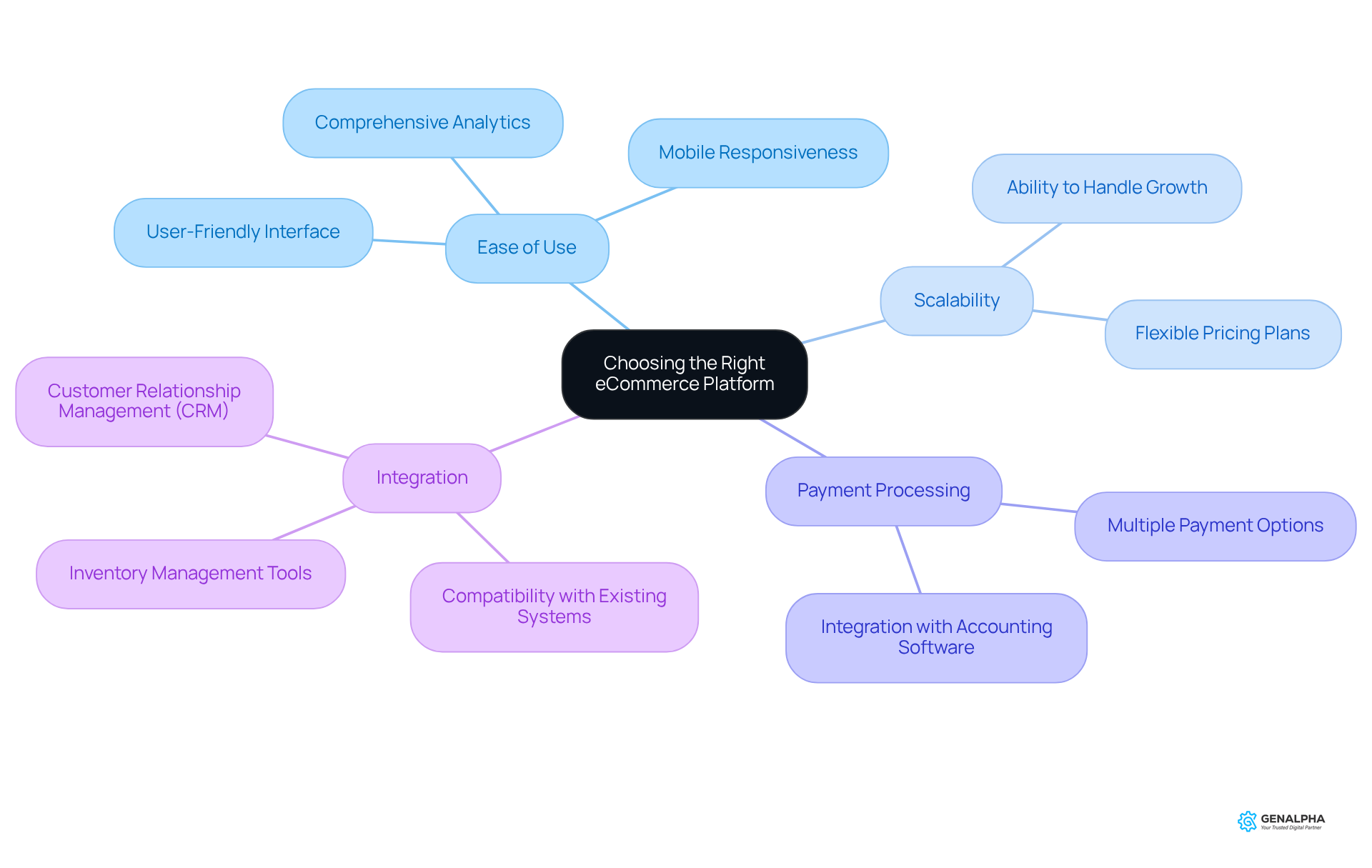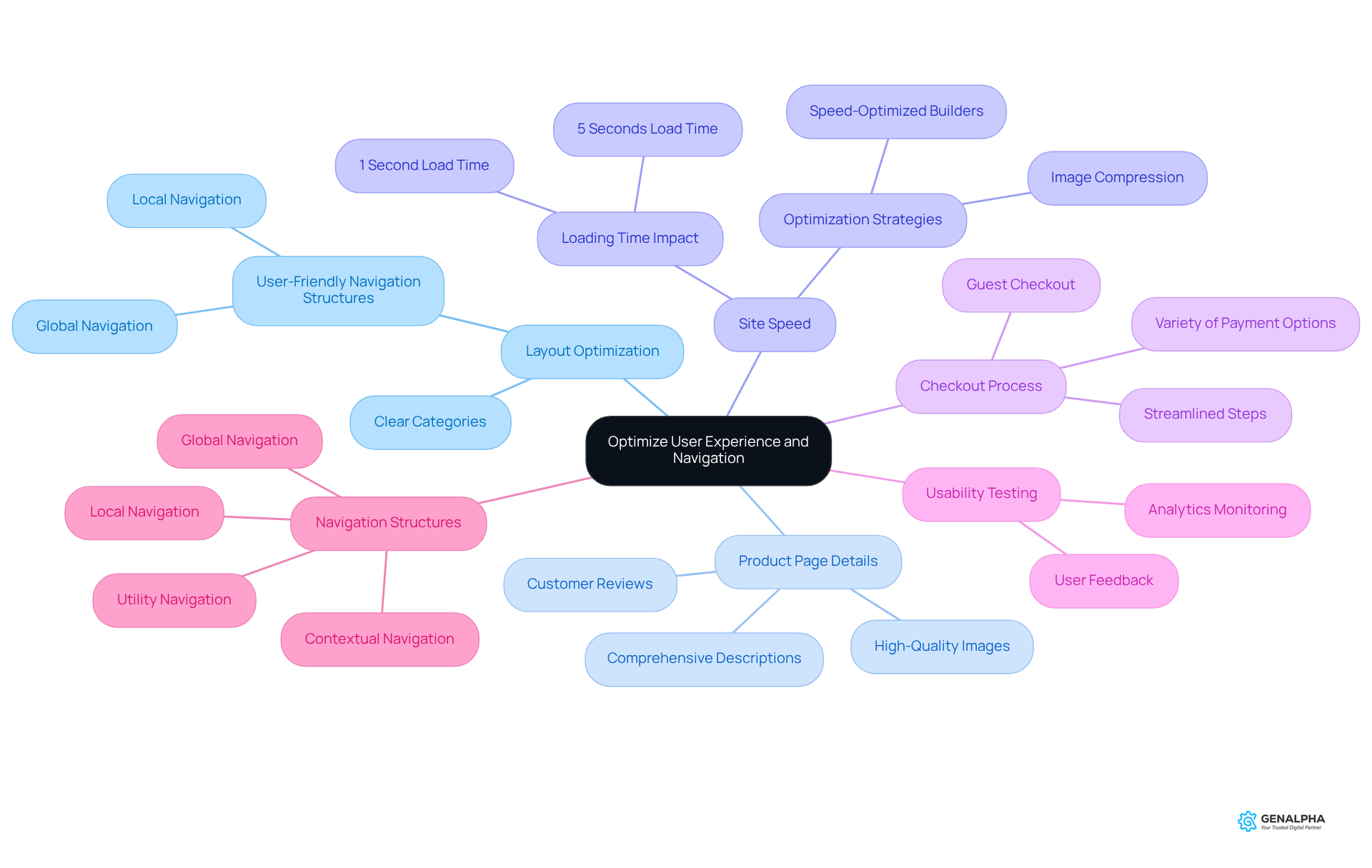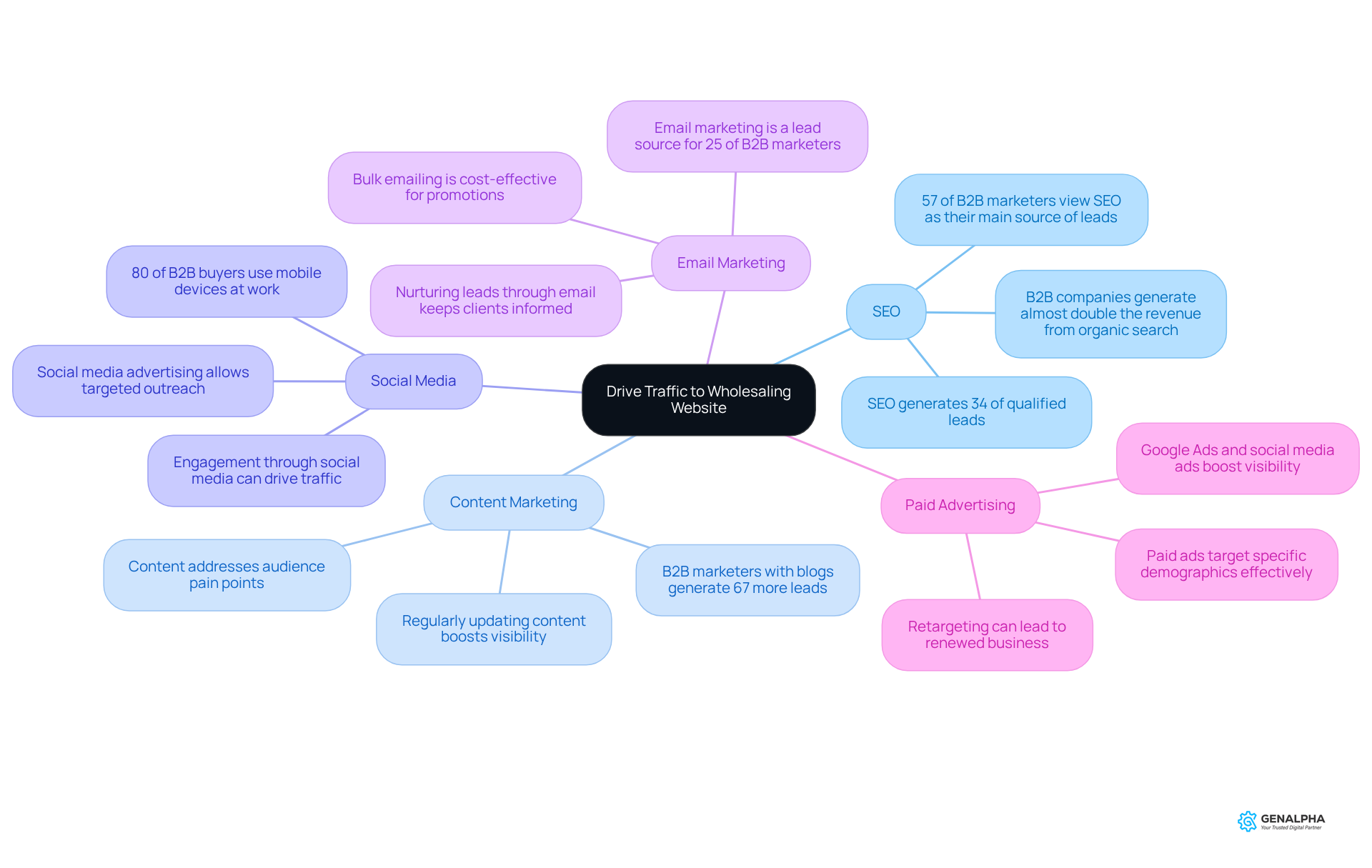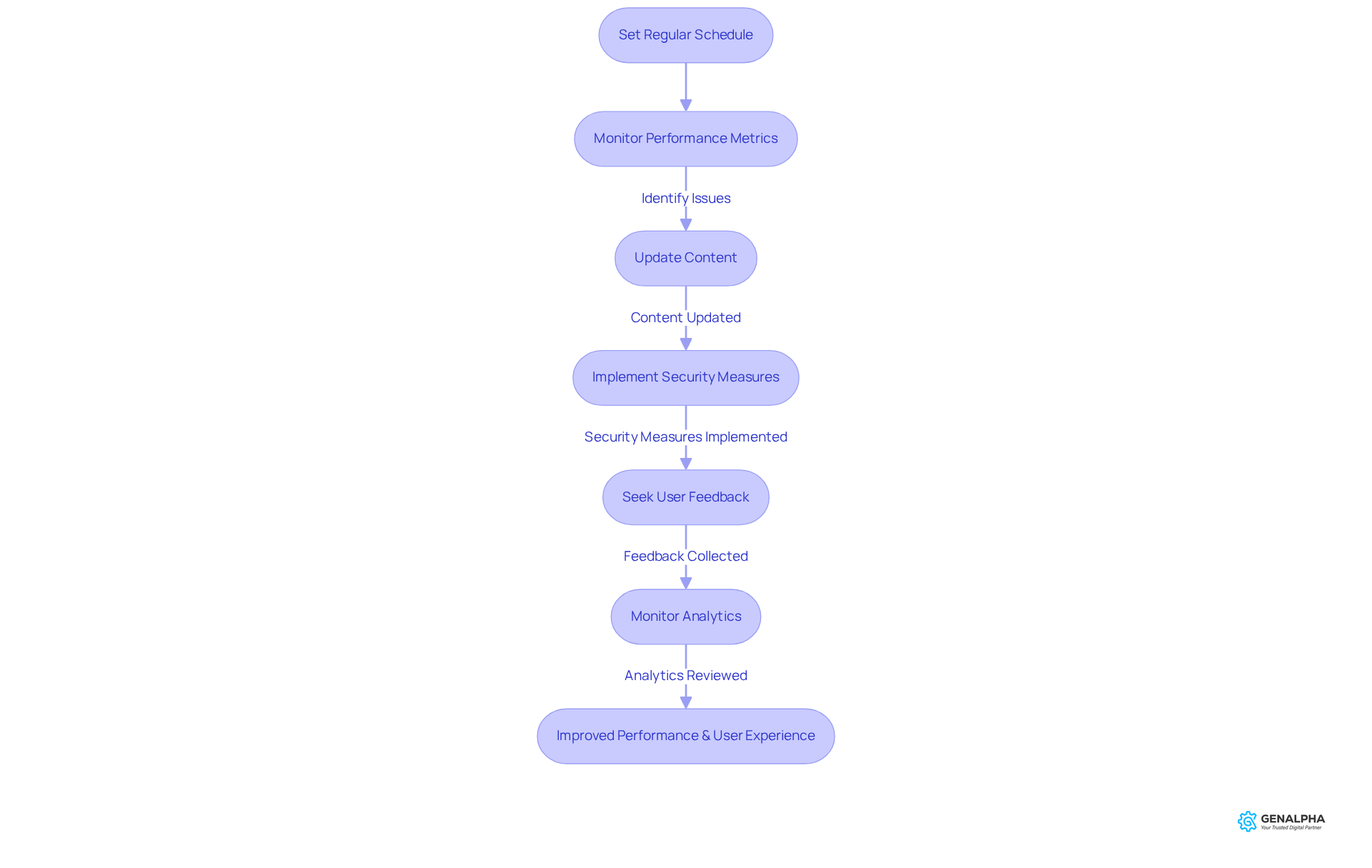Overview
Creating a successful wholesaling website can seem daunting, but it boils down to five essential steps.
- Define your target audience—who are you trying to reach?
- Choose the right eCommerce platform; it’s like picking the perfect home for your business.
- Optimize user experience—think about how easy it is for visitors to navigate your site.
- Implement effective marketing strategies to get the word out about your fantastic offerings.
- Maintain regular updates; keeping your website fresh is vital for staying relevant.
This article dives into each of these steps, offering actionable insights along the way. For example, it highlights the importance of market research, user-friendly design, SEO, and ongoing maintenance. These elements are essential for enhancing your visibility and boosting user engagement.
So, are you ready to take your wholesaling website to the next level?
Introduction
Building a successful wholesaling website isn't just about putting up a digital storefront; it’s about taking a strategic approach. Think about it: understanding your target audience, picking the right eCommerce platform, and rolling out effective marketing strategies are all key. This guide lays out essential steps that not only improve user experience but also drive traffic and help your business grow in a competitive market. But with so many platforms and techniques out there, how do you make sure your website stands out and meets the ever-changing needs of customers? Asking these important questions can unlock the potential for a thriving online wholesaling business.
Define Your Target Audience and Market Needs
So, how do you really nail down your target audience? Start by diving into some market research to gather insights about potential clients. Think about using surveys, interviews, and analytics tools to get a clear picture of their demographics, preferences, and purchasing habits.
- Create customer personas that reflect different segments of your audience.
- These personas should detail their needs, challenges, and motivations.
- This way, you can tailor your website’s design and content to truly resonate with your audience's interests.
And don’t forget to keep an eye on your competitors! Analyzing what they offer can help you spot gaps in the market that your website could fill, boosting your value proposition.
- What unique solutions can you provide that others aren’t?
- Let’s find out!

Choose the Right eCommerce Platform
Selecting the right wholesaling website is crucial for achieving success in the wholesale market. So, what should you look for? Think about:
- Ease of use
- Scalability
- Payment processing options
- Integration with your existing systems
Platforms like Shopify, WooCommerce, and GenAlpha's Equip360 each offer unique features that are particularly beneficial for a wholesaling website. For example, Equip360 really shines with its strong inventory management and customer relationship management (CRM) tools—essential for equipment manufacturers who want to streamline their operations.
Now, when you’re evaluating your options, consider:
- Your business size
- Product range
- Where you see yourself growing
It’s also wise to look for platforms that offer comprehensive analytics to help you track performance and make informed decisions. And don’t forget about mobile responsiveness; a lot of people shop on their mobile devices these days! Research shows that companies providing outstanding digital experiences are twice as likely to be chosen as primary suppliers. Plus, B2B wholesale eCommerce platforms need to ensure that all orders are fulfilled promptly and accurately. This just reinforces how crucial it is to choose a reliable wholesaling website for operational efficiency. By prioritizing these features, you can boost your online presence and drive sales effectively. What are you waiting for?

Optimize User Experience and Navigation
To enhance your experience, let’s prioritize a clean and intuitive layout that makes navigation a breeze. Imagine browsing through products organized into clear categories and subcategories, all supported by a robust search function that helps you find what you need in no time. Product pages should be bursting with detail—think high-quality images, comprehensive descriptions, and customer reviews—all of which play a big role in your purchasing decisions. Did you know that a site that loads in just 1 second has an e-commerce conversion rate 2.5 times greater than one that takes 5 seconds? That really highlights how important speed is for smooth navigation!
Now, streamlining the checkout process is essential. Aim to cut down on steps and offer features like guest checkout and a variety of payment options to make things as convenient as possible. Consistent usability testing through user feedback and analytics will help you spot areas for improvement, ensuring your platform stays user-friendly and effective at driving sales.
Additionally, consider implementing user-friendly navigation structures, such as global and local navigation. This can really enhance your overall shopping experience. What do you think? Are there any changes you’d like to see that could make your shopping journey even better?

Implement Marketing Strategies to Drive Traffic
If you want to drive traffic to your wholesaling website effectively, it's time to embrace a multi-channel marketing strategy. Think about it: search engine optimization (SEO), content marketing, and social media engagement are your best friends here. Start by optimizing your website for keywords that matter. Why? Because this is key to boosting your search engine rankings. Research shows that a whopping 57% of B2B marketers view SEO as their main source of leads, which really highlights how crucial it is for attracting potential customers. Plus, B2B companies rake in almost double the revenue from organic search compared to any other channel. That’s a strong case for a solid SEO strategy!
Now, let’s talk about creating valuable content. Producing blog posts or guides that address your audience's pain points can position your brand as an industry leader and seriously enhance your SEO game. In fact, B2B marketers with blogs generate 67% more leads than those without. Regularly updating your content not only boosts visibility but also pulls potential clients right into your sales funnel. And get this—SEO is responsible for generating 34% of qualified leads. That makes it a must-have in your marketing toolkit!
Don’t forget about social media! It’s a fantastic way to showcase your products and connect with clients. With 80% of B2B buyers using mobile devices at work, having a strong social media presence can ramp up engagement and drive more traffic to your site. Plus, consider launching email marketing campaigns to nurture leads and keep your current clients in the loop about new products or promotions. Did you know that email marketing is a lead source for 25% of B2B marketers? It’s definitely worth your attention!
To widen your reach even more, think about diving into paid advertising options like Google Ads or social media ads. These strategies can target specific demographics effectively, boosting your visibility and driving conversions. By combining these marketing tactics, you can build a powerful online presence through your wholesaling website that attracts and retains customers in the competitive wholesaling landscape. So, what are you waiting for? Let’s get started!

Maintain and Update Your Website Regularly
To keep your online presence running smoothly and reliably, why not set up a regular schedule for checking its functionality and security? Regularly monitoring performance metrics is key to spotting issues like broken links or slow loading times, which can really affect user experience and conversion rates. Did you know that just a one-second delay in page load time can cut conversions by 7%? Plus, websites that are updated often see 55% more visitors, highlighting the importance of keeping your content fresh.
It's super important to keep product information, pricing, and promotional content up-to-date so that your offerings reflect what you currently have and maintain customer trust. Don’t forget to implement strong security measures, like SSL certificates and regular backups, since 43% of cyberattacks target small businesses. Protecting your data is crucial for compliance with standards like PCI-DSS and GDPR.
Additionally, actively seeking feedback from your users can help you pinpoint areas for improvement, allowing you to make changes that enhance the overall experience. Regular updates not only boost site performance but also signal to search engines that your website is active and relevant, which can improve your visibility in search results. Monitoring analytics is also essential for understanding user behavior and optimizing your site accordingly. So, are you ready to take action and enhance your online presence?

Conclusion
Building a successful wholesaling website isn't just about having a platform; it’s about crafting an experience that resonates with your audience. Think about it: when you understand your target audience, choose the right eCommerce platform, and optimize user experience, you're not just attracting customers—you’re building lasting relationships that drive sales.
So, what are the essential steps?
- Define your target audience and market needs through research and competitor analysis.
- Select an eCommerce platform that fits your business requirements.
- Focus on optimizing user experience and navigation for seamless interactions.
- Implement effective marketing strategies to drive traffic.
- Keep your website maintained regularly to ensure it performs at its best.
Each of these steps is key to laying a strong foundation for your wholesaling website and boosting its effectiveness.
In conclusion, let’s not underestimate the power of a well-structured wholesaling website. By putting your audience's needs first and leveraging the right tools and strategies, you can truly set yourself up for success in the competitive wholesale market. Embracing these best practices will not only enhance your visibility and engagement but also pave the way for sustainable growth and profitability. So, are you ready to take action? Let’s transform your online presence into a powerful asset that delivers results!
Frequently Asked Questions
How can I define my target audience effectively?
You can define your target audience by conducting market research, utilizing surveys, interviews, and analytics tools to gather insights about potential clients’ demographics, preferences, and purchasing habits. Creating customer personas that reflect different segments of your audience can also help in tailoring your website’s design and content.
What are customer personas, and why are they important?
Customer personas are detailed representations of different segments of your target audience, including their needs, challenges, and motivations. They are important because they allow you to tailor your website’s design and content to resonate more effectively with your audience's interests.
How can analyzing competitors help in defining my market needs?
Analyzing competitors can help you identify what they offer and spot gaps in the market that your website could fill. This can enhance your value proposition by allowing you to provide unique solutions that others are not offering.
What factors should I consider when choosing an eCommerce platform for wholesaling?
When choosing an eCommerce platform, consider factors such as ease of use, scalability, payment processing options, integration with existing systems, and mobile responsiveness. Additionally, evaluate the platform's analytics capabilities to track performance.
What are some recommended eCommerce platforms for wholesaling?
Recommended eCommerce platforms for wholesaling include Shopify, WooCommerce, and GenAlpha's Equip360. Equip360 is particularly noted for its strong inventory management and customer relationship management (CRM) tools.
Why is mobile responsiveness important for eCommerce platforms?
Mobile responsiveness is important because many people shop on their mobile devices. Platforms that provide outstanding digital experiences are more likely to be chosen as primary suppliers, making it essential for operational efficiency.
What role do analytics play in choosing an eCommerce platform?
Comprehensive analytics are crucial as they help you track performance and make informed decisions regarding your business operations, ultimately aiding in boosting your online presence and driving sales effectively.




